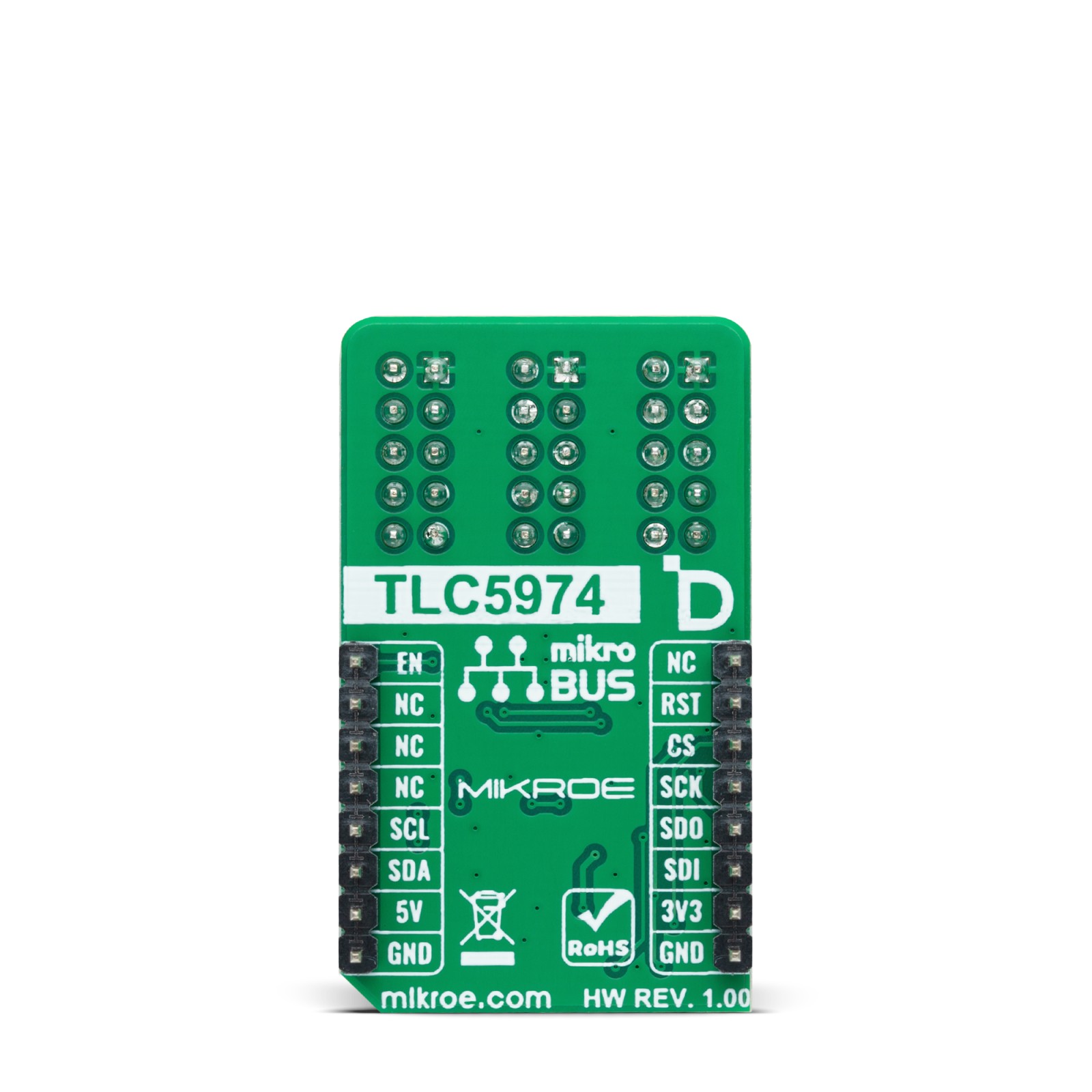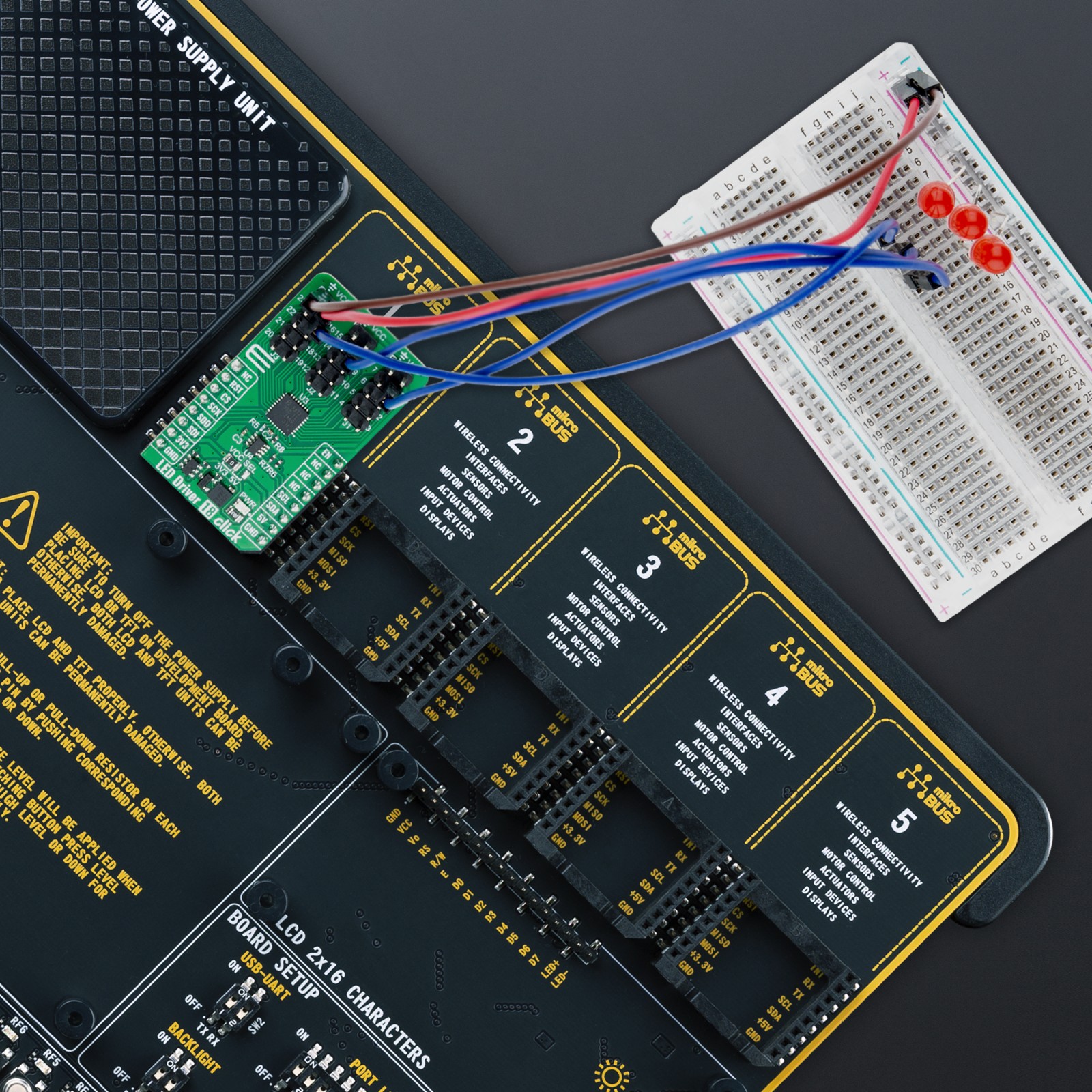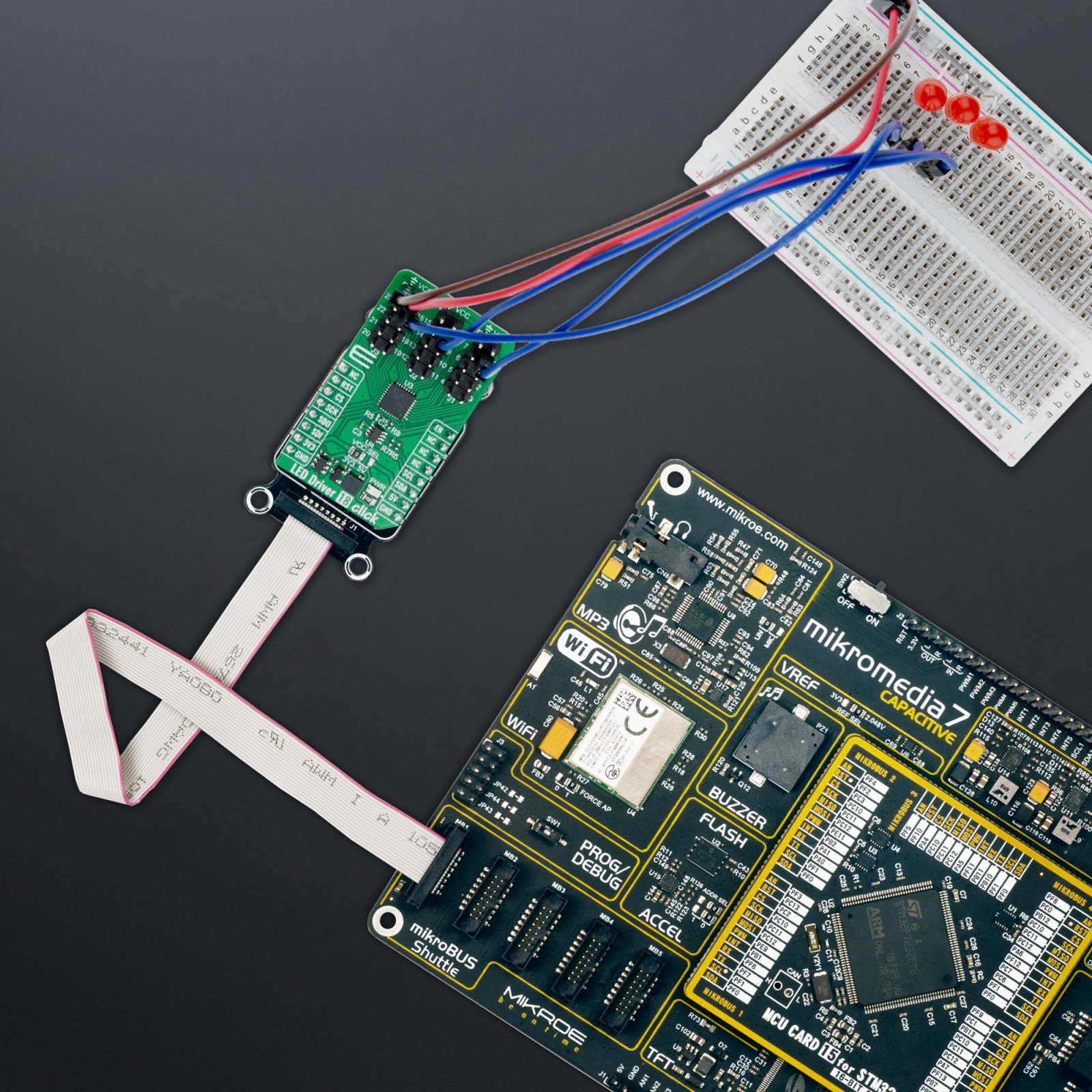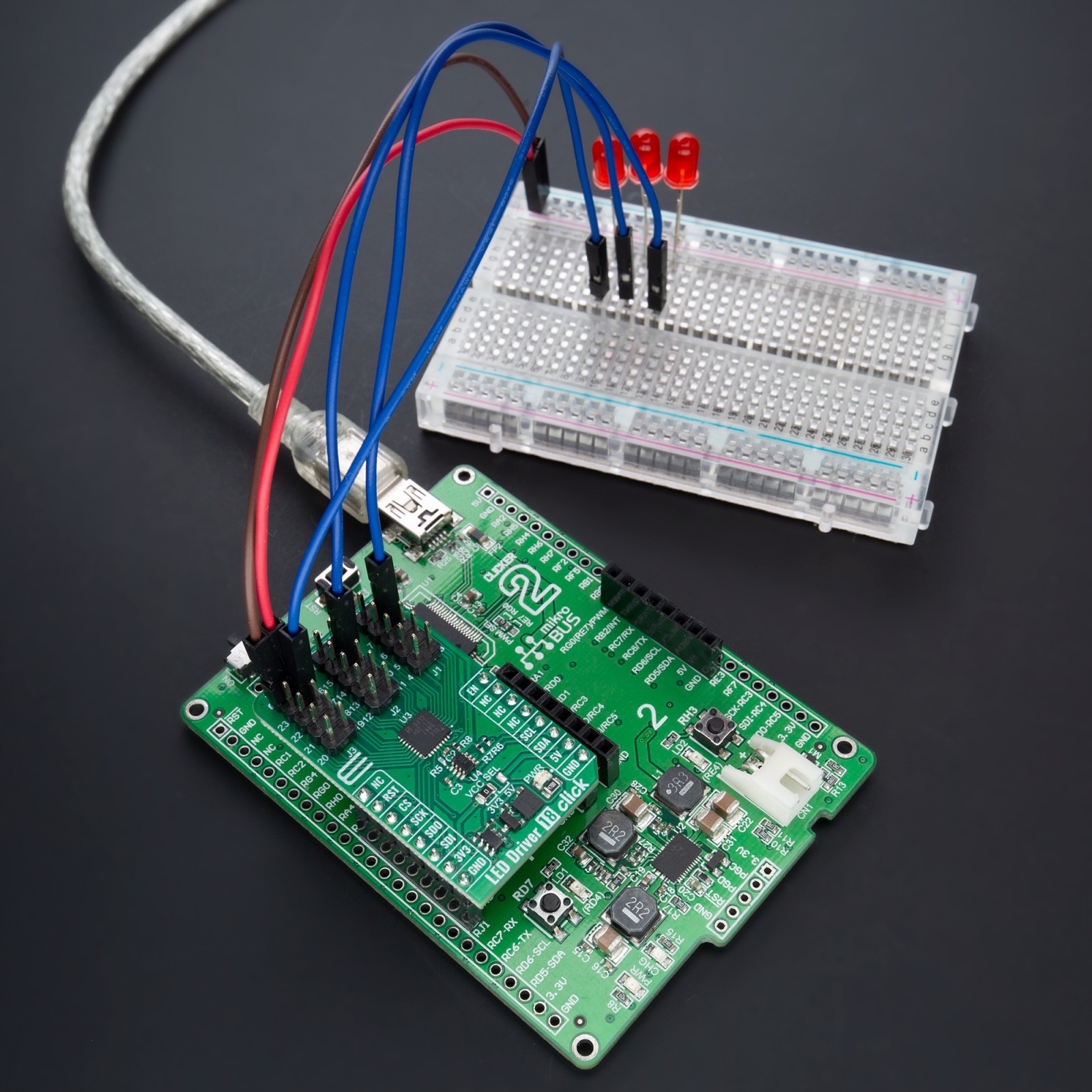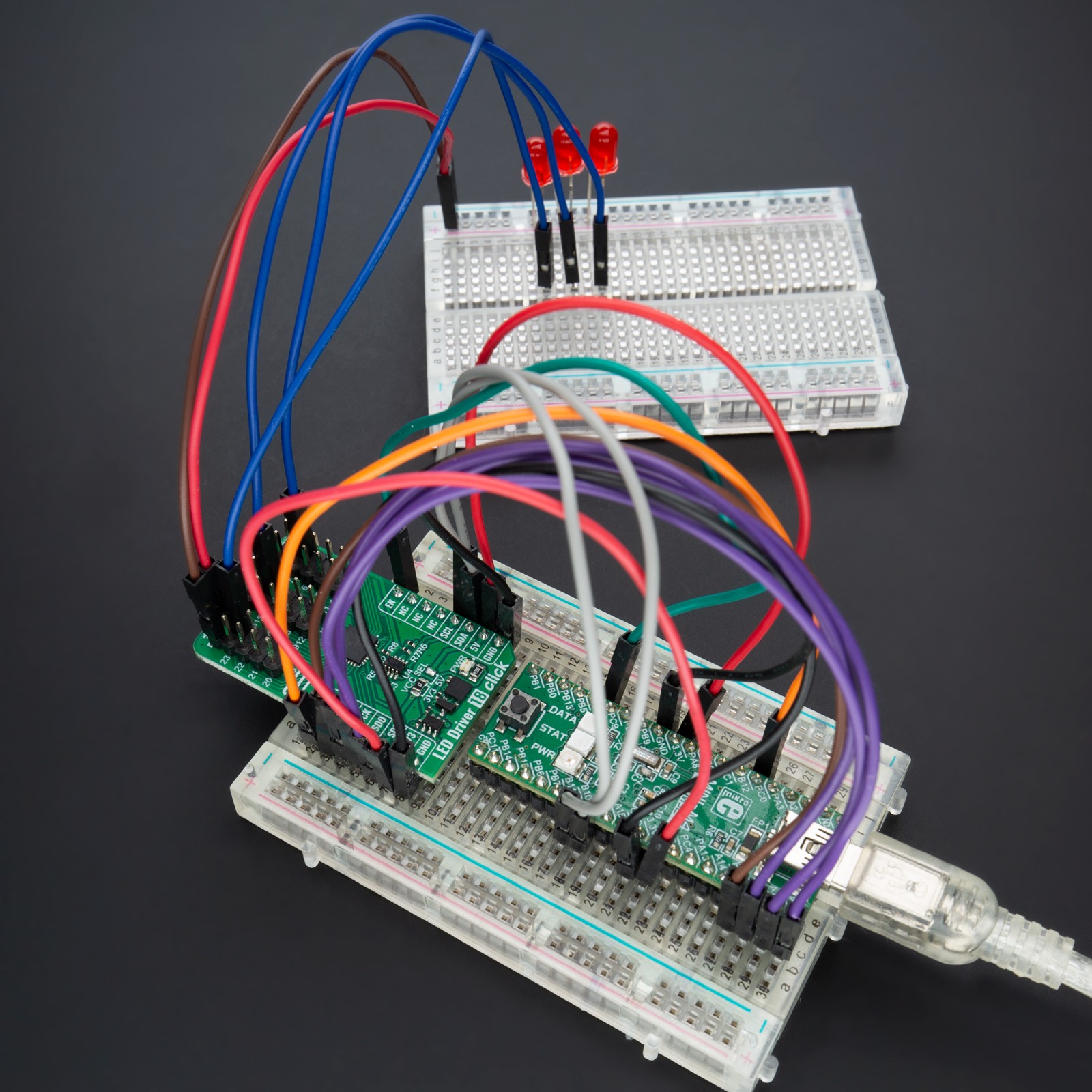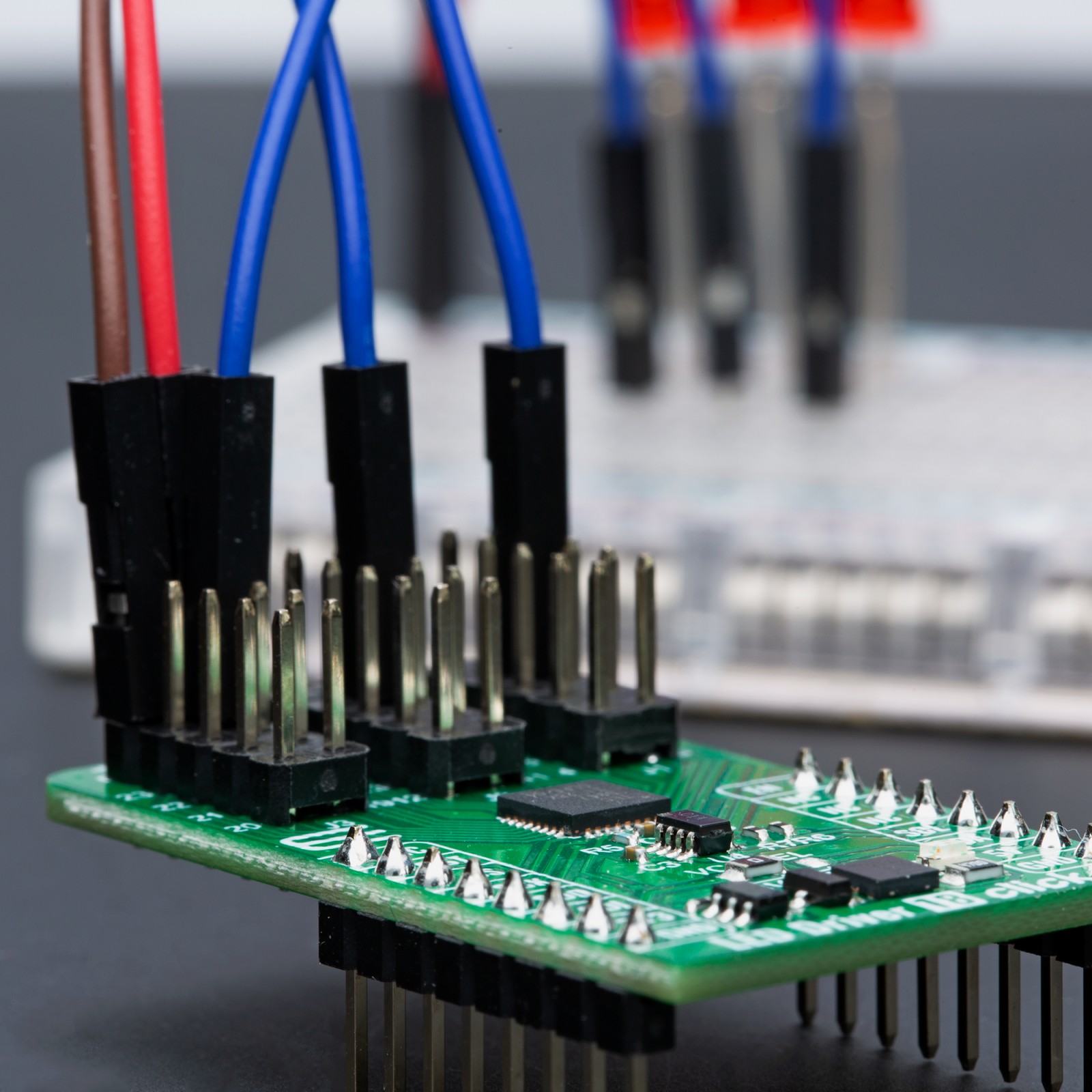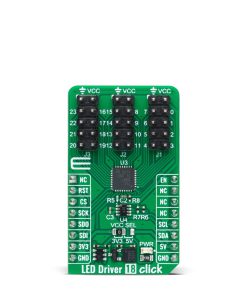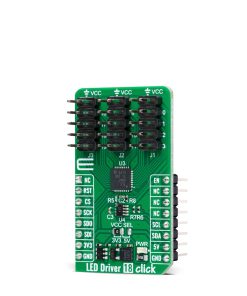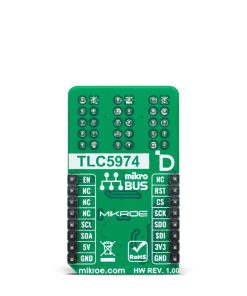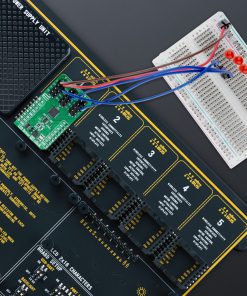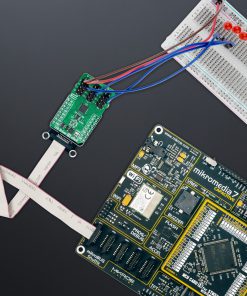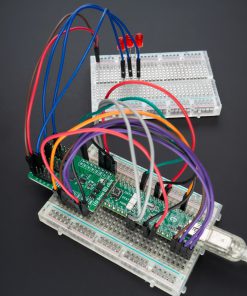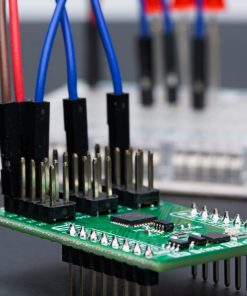LED Driver 18 Click
R575.00 ex. VAT
LED Driver 18 Click is a compact add-on board that simplifies the control of multiple LEDs. This board features the TLC5947, a 24-channel LED driver from Texas Instruments. Each channel is individually adjustable with 4096 pulse-width modulated (PWM) steps and has a programmable current value of all channels with a maximum of 30mA of LED current per channel. This LED driver also features a built-in thermal shutdown function that turns OFF all output drivers during an over-temperature condition. This Click board™ is suitable for color mixing and backlight application for amusement products, LED status signalization, home automation projects, and many more.
LED Driver 18 Click is fully compatible with the mikroBUS™ socket and can be used on any host system supporting the mikroBUS™ standard. It comes with the mikroSDK open-source libraries, offering unparalleled flexibility for evaluation and customization. What sets this Click board™ apart is the groundbreaking ClickID feature, enabling your host system to seamlessly and automatically detect and identify this add-on board.
Stock: Lead-time applicable.
| 5+ | R546.25 |
| 10+ | R517.50 |
| 15+ | R488.75 |
| 20+ | R470.35 |



